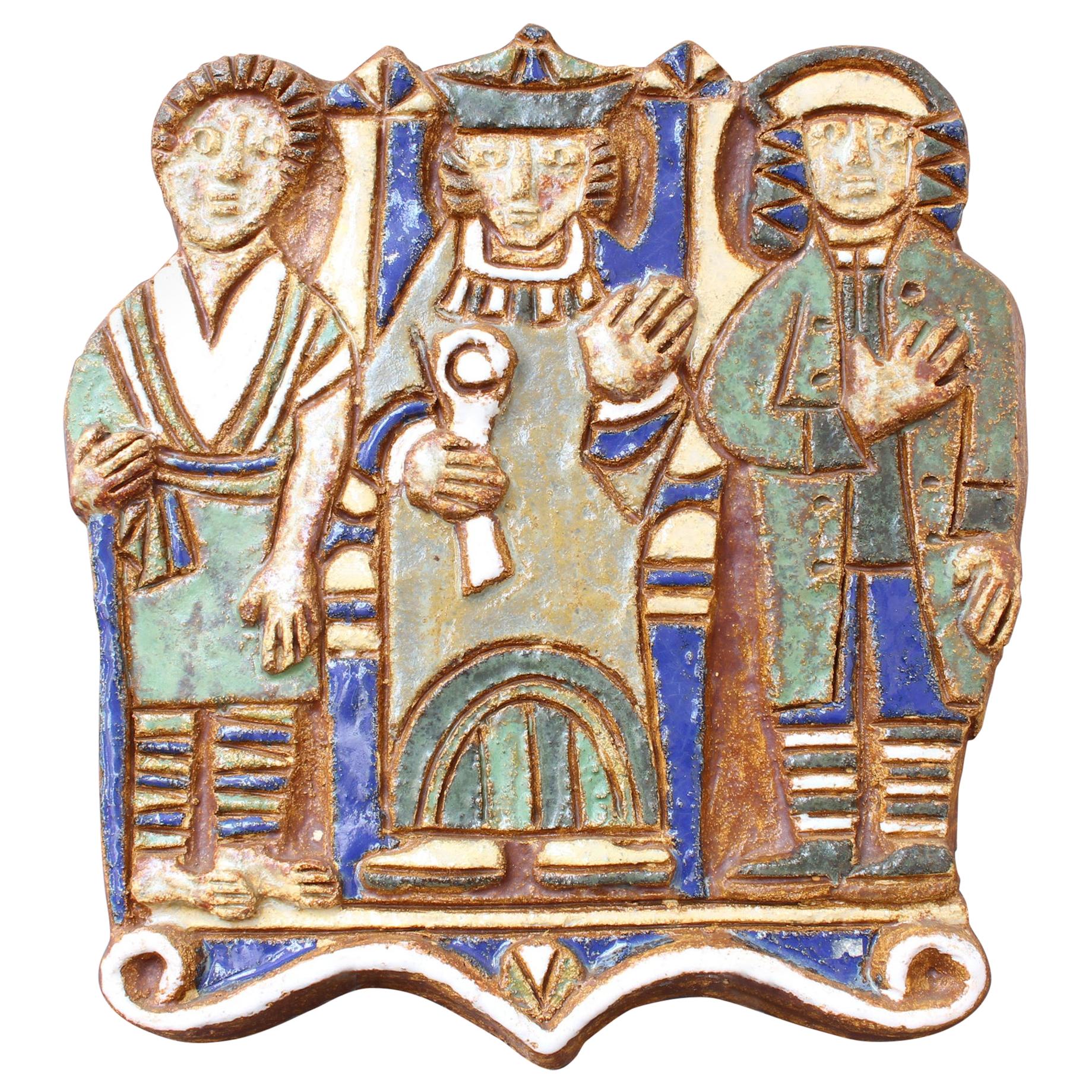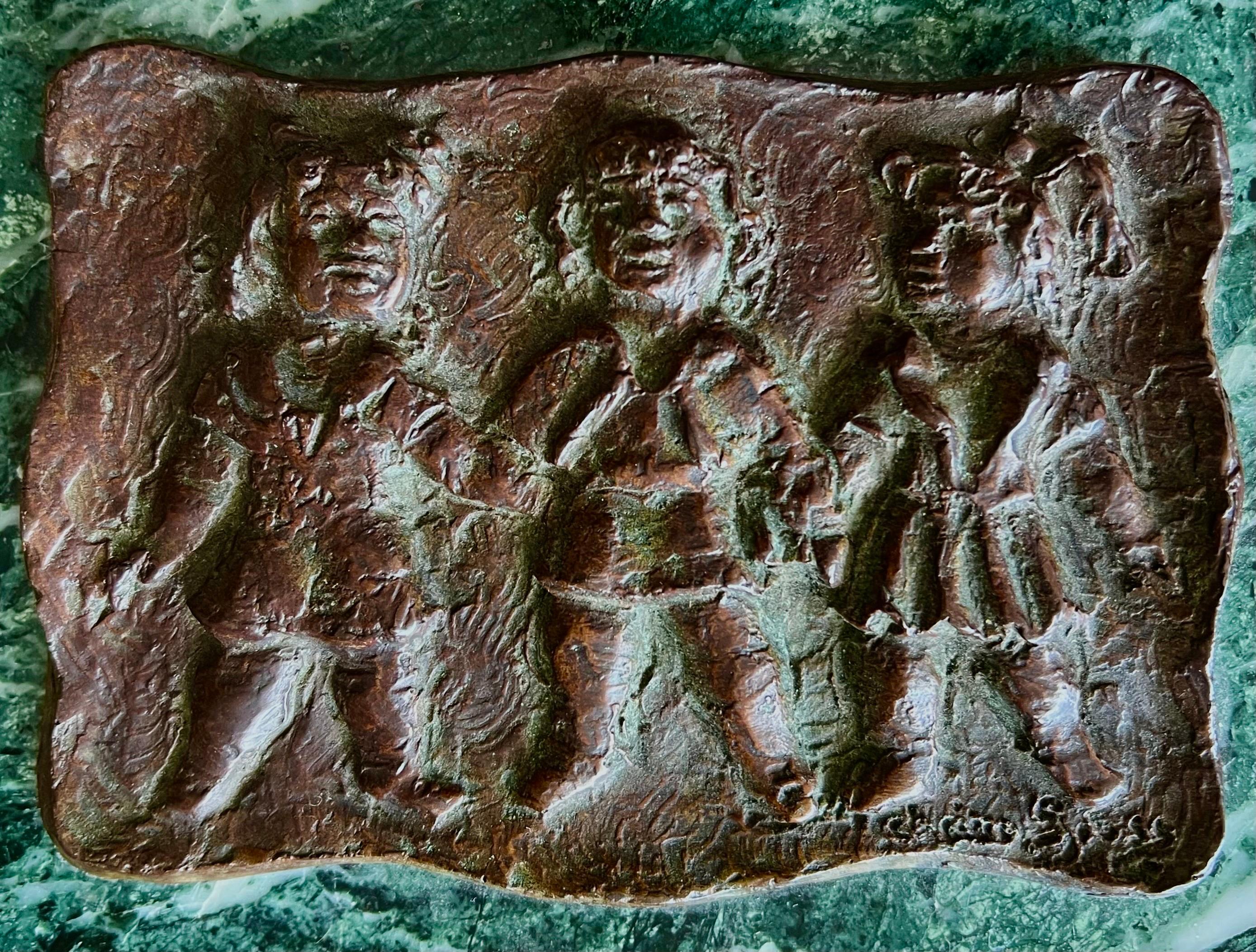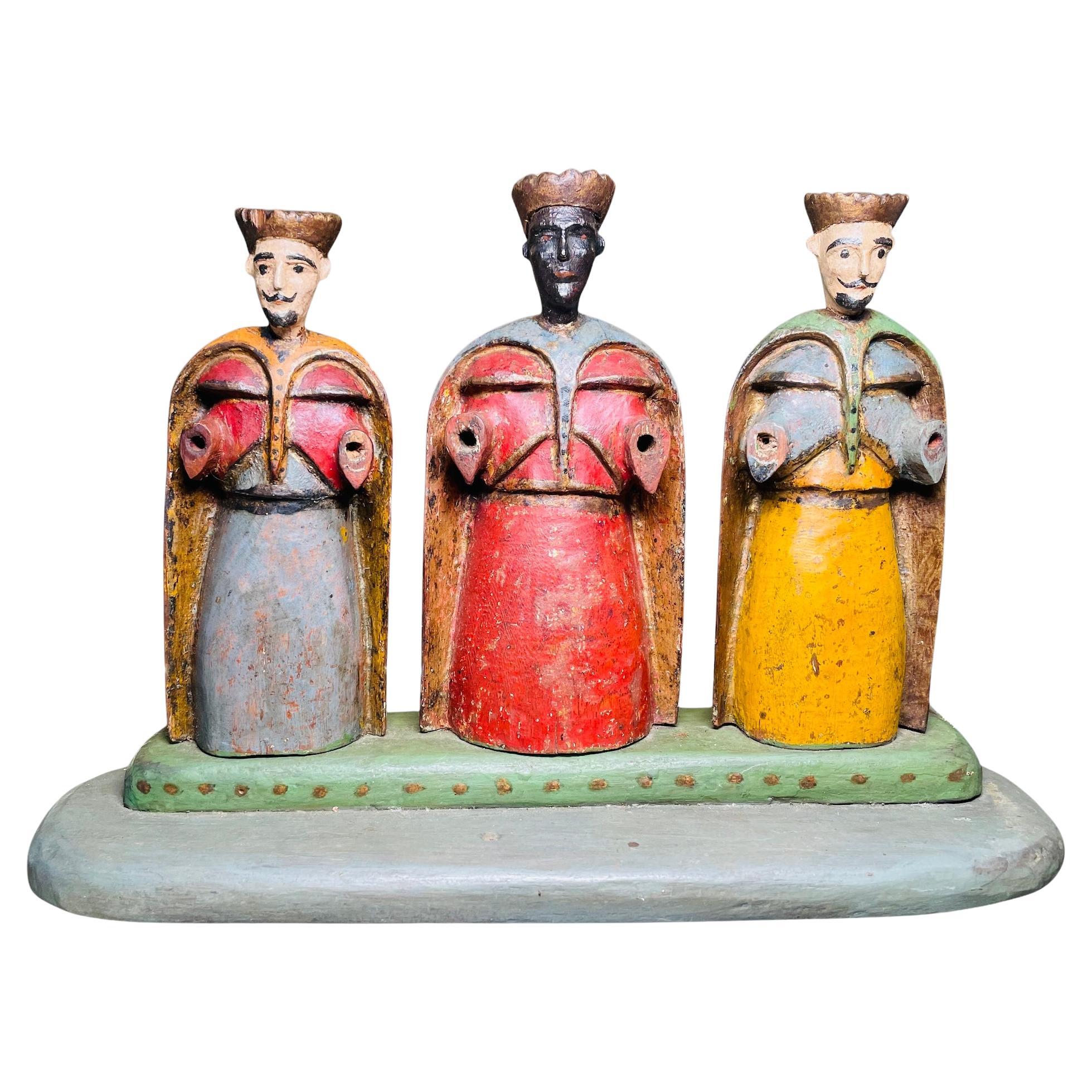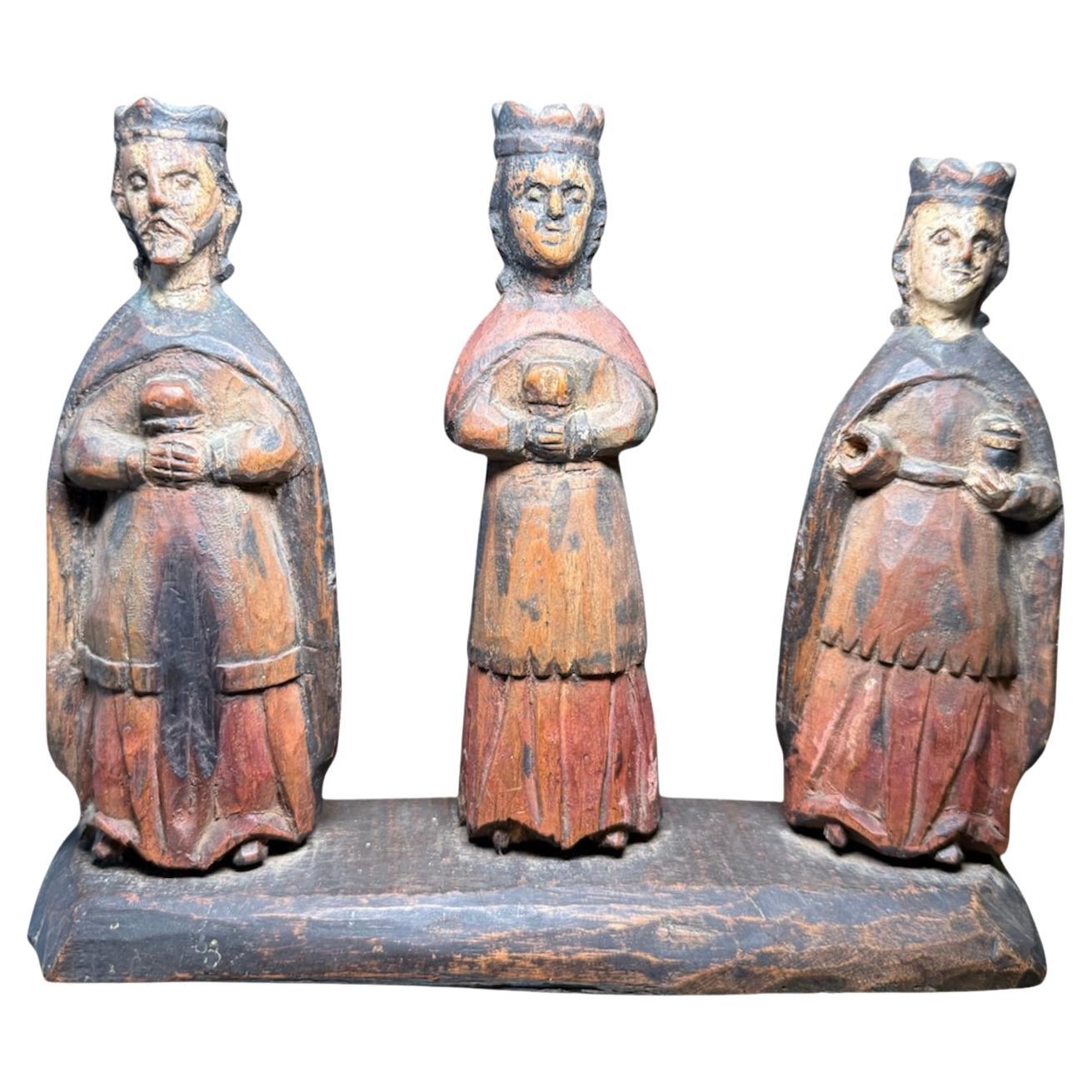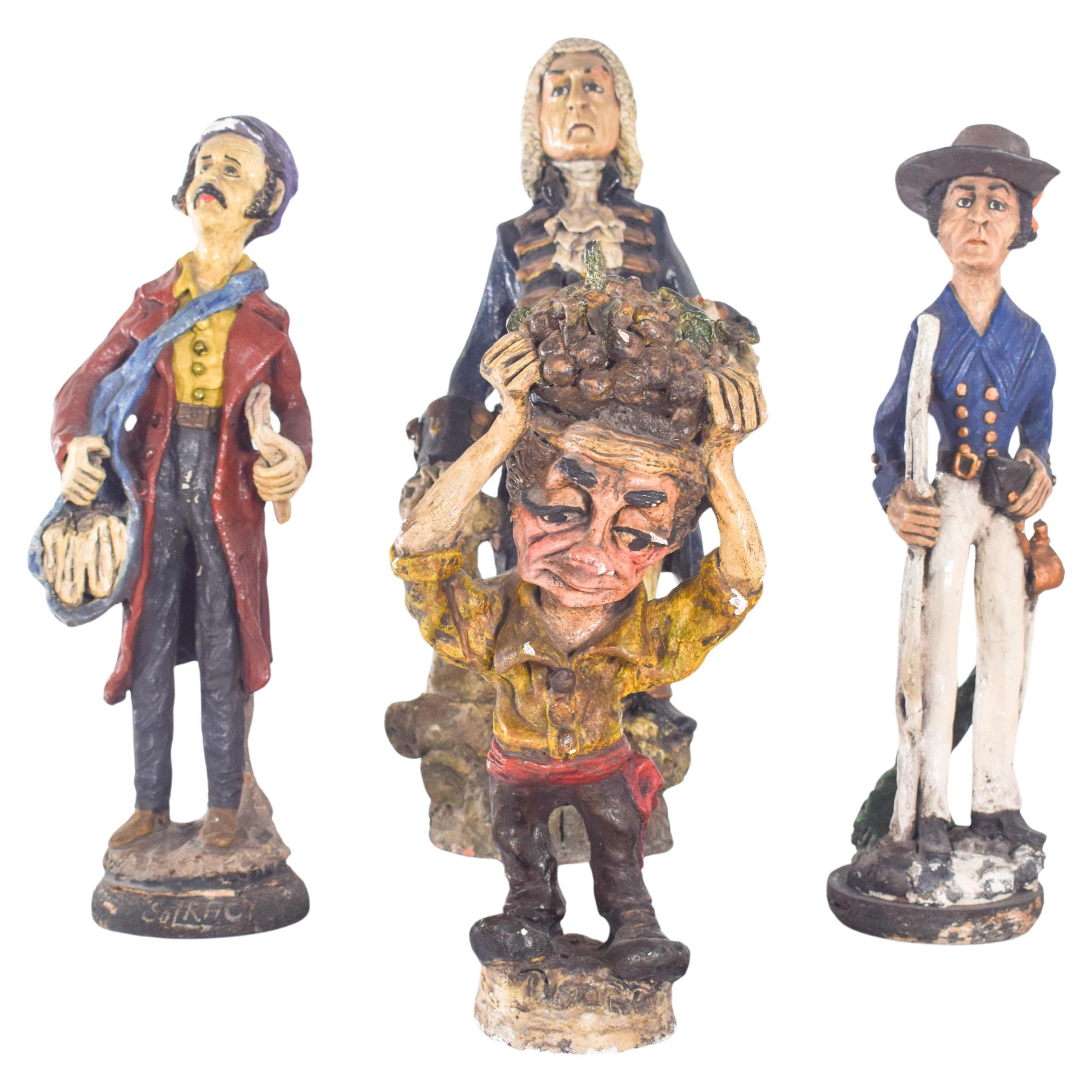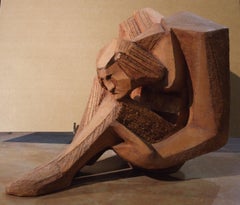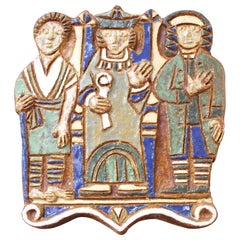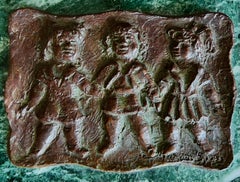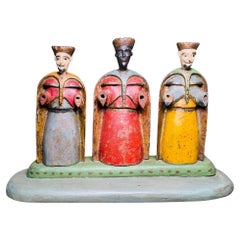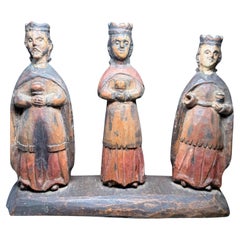Items Similar to Les 3 Amis, 1950-55 - ceramic, 30x36x5 cm
Want more images or videos?
Request additional images or videos from the seller
1 of 5
Les ArgonautesLes 3 Amis, 1950-55 - ceramic, 30x36x5 cm1950-55
1950-55
$1,671.95
£1,236.35
€1,400
CA$2,296.58
A$2,553.67
CHF 1,336.89
MX$31,193.52
NOK 16,799.35
SEK 15,803.15
DKK 10,659.92
About the Item
Ceramic from Vallauris
Workshop "Les Argonautes", Vallauris: Isabelle Ferlay (1917-?) And Frédérique Bourguet (1925-1997)
Isabelle Ferlay and Frédérique Bourguet founded their ceramic workshop in Vallauris in 1953, which they named "Les Argonautes", in reference to the famous Greek epic.
Isabelle studied painting at the Fine Arts school of Lyon in 1940, then she attended the Fine Arts in Marseille. Finally, she finished her artistic training in Montpellier, at the Fontcarade national school, where she learned ceramics.
Françoise dit Frédérique Bourguet studied at the Beaux-Arts in Montpellier until 1945 and it was in Sèvres, in Françoise Bizette's studio, that she trained in the art of ceramics. She created her first workshop in Paris in 1945, which she shared with Valentine Schlegel until 1951. The two women ceramicists then practiced
modeling technique. It was in 1953 that she met Isabelle Ferlay and together, they decided to set up a workshop in Vallauris. They produce
shaped pieces, sometimes molded, made of earthenware, enamelled in bright colors. In the 1970s they made stoneware cooked over a wood fire. Some ceramists frequented their workshop, notably the very talented Jacques Innocenti and François Raty.
- Creator:Les Argonautes (French)
- Creation Year:1950-55
- Dimensions:Height: 11.82 in (30 cm)Width: 14.18 in (36 cm)Depth: 1.97 in (5 cm)
- Medium:
- Period:
- Condition:
- Gallery Location:Nice, FR
- Reference Number:1stDibs: LU52831550943
About the Seller
4.8
Vetted Professional Seller
Every seller passes strict standards for authenticity and reliability
Established in 1998
1stDibs seller since 2016
84 sales on 1stDibs
Typical response time: 11 hours
- ShippingRetrieving quote...Shipping from: Nice, France
- Return Policy
Authenticity Guarantee
In the unlikely event there’s an issue with an item’s authenticity, contact us within 1 year for a full refund. DetailsMoney-Back Guarantee
If your item is not as described, is damaged in transit, or does not arrive, contact us within 7 days for a full refund. Details24-Hour Cancellation
You have a 24-hour grace period in which to reconsider your purchase, with no questions asked.Vetted Professional Sellers
Our world-class sellers must adhere to strict standards for service and quality, maintaining the integrity of our listings.Price-Match Guarantee
If you find that a seller listed the same item for a lower price elsewhere, we’ll match it.Trusted Global Delivery
Our best-in-class carrier network provides specialized shipping options worldwide, including custom delivery.More From This Seller
View AllLa Galère, 1950 - ceramic, 46x132x5
By Les Argonautes
Located in Nice, FR
Very Big Ceramic from "Les Argonautes" Vallauris
Workshop "Les Argonautes", Vallauris: Isabelle Ferlay (1917-?) And Frédérique Bourguet (1925-1997)
Isabelle Ferlay and Frédérique Bourguet founded their ceramic workshop in Vallauris in 1953, which they named "Les Argonautes", in reference to the famous Greek epic.
Isabelle studied painting at the Fine Arts school of Lyon in 1940, then she attended the Fine Arts in Marseille. Finally, she finished her artistic training in Montpellier, at the Fontcarade national school, where she learned ceramics.
Françoise dit Frédérique Bourguet studied at the Beaux-Arts in Montpellier until 1945 and it was in Sèvres, in Françoise Bizette's studio, that she trained in the art of ceramics. She created her first workshop in Paris in 1945, which she shared with Valentine Schlegel until 1951. The two women ceramicists then practiced
modeling technique. It was in 1953 that she met Isabelle Ferlay and together, they decided to set up a workshop in Vallauris. They produce
shaped pieces, sometimes molded, made of earthenware, enamelled in bright colors. In the 1970s they made stoneware cooked over a wood fire. Some ceramists frequented their workshop, notably the very talented Jacques Innocenti and François Raty.
Category
Mid-20th Century Modern More Art
Materials
Ceramic
Abstract Ceramic , 1950-60 - ceramic, 38x70 cm
Located in Nice, FR
Ceramic from school of Vallauris
Category
Late 20th Century Abstract More Art
Materials
Ceramic
Abstract Papier Mache Composition, 1950-60 - papier mache, 83x65x4 cm., framed
By Les Argonautes
Located in Nice, FR
Paper mache "Les Argonautes" Artist: JS. Ferlay Vallauris
Workshop "Les Argonautes", Vallauris: Isabelle Ferlay (1917-?) And Frédérique Bourguet (1925-1997)
Isabelle Ferlay and Frédérique Bourguet founded their ceramic workshop in Vallauris in 1953, which they named "Les Argonautes", in reference to the famous Greek epic.
Isabelle studied painting at the Fine Arts school of Lyon in 1940, then she attended the Fine Arts in Marseille. Finally, she finished her artistic training in Montpellier, at the Fontcarade national school, where she learned ceramics.
Françoise dit Frédérique Bourguet studied at the Beaux-Arts in Montpellier until 1945 and it was in Sèvres, in Françoise Bizette's studio, that she trained in the art of ceramics. She created her first workshop in Paris in 1945, which she shared with Valentine Schlegel until 1951. The two women ceramicists then practiced
modeling technique. It was in 1953 that she met Isabelle Ferlay and together, they decided to set up a workshop in Vallauris. They produce
shaped pieces, sometimes molded, made of earthenware, enamelled in bright colors. In the 1970s they made stoneware cooked over a wood fire. Some ceramists frequented their workshop, notably the very talented Jacques Innocenti and François Raty.
Category
Mid-20th Century Abstract More Art
Materials
Papier Mâché
seated man, '70s - clay sculpture, 36x30x23 cm.
Located in Nice, FR
Sculpture made of clay depicting a seated man in a cubist way
Category
1970s Modern Figurative Sculptures
Materials
Clay
Baby, 1900-1920 - terracotta, 37x38x20 cm
By Max Cantini
Located in Nice, FR
Sculpture in terracotta.
Category
Early 20th Century Academic Figurative Sculptures
Materials
Terracotta
Three people, '70s - oil paint, 63x70 cm. framed
Located in Nice, FR
Jeon leon jansen is an armenian painter born in 1920. beautiful oil on canvas.
Category
1970s Post-Impressionist Figurative Paintings
Materials
Oil
You May Also Like
French Decorative Ceramic Wall Plaque with Three Figures by Les Argonautes 1960s
By Les Argonautes
Located in London, GB
French vintage decorative ceramic wall plaque with three figures, by Les Argonautes, Vallauris, France (circa 1960s). A refreshingly naive and charming piece depicting three men in olden robes and hats. It is up to the viewer to decide who they represent. This stoneware piece is weighty and substantial and may be hung on the wall or simply allowed to lean against a vertical surface. There's no doubt it is a charming piece by a renowned pair of French ceramicists who created 'Les Argonautes' pottery studio. This piece is signed on the backside: 'Les Argonautes'. It is in good condition. Hanging string on rear. Upon request a video may be provided.
About the artists: Isabelle Ferlay (Born 1917) and Frédérique Bourguet (1925-1997) set up a pottery studio together in Vallauris in the South of France which they named 'Les Argonautes'. Using the local Vallauris red...
Category
Vintage 1960s French Mid-Century Modern Wall-mounted Sculptures
Materials
Ceramic
Three Girls Bronze Relief Sculpture Plaque Chaim Gross Modernist WPA Era Artist
By Chaim Gross
Located in Surfside, FL
Chaim Gross
Three little girls, three Graces. 1981.
Bronze sculptural relief plaque mounted to verdigris marble.
signed and dated on marble
Marble approx 7.5" x 7" x 1.5". Bronze: 5.25" x 4" x 1"
Chaim Gross, born in Wolowa, Austria in 1904, was educated at the Beaux Arts Institute of Design and at the Art Student's League in New York. Chaim Gross's work was greatly influenced by his experiences during a period of international conflict, World War II. He had moved to Kolomyia from Wolowa to get a better education, but the Germans came to occupy, killing, raping, and looting. Gross and his family were chased from one village to
the next. He wrote, "We were sleeping on roofs and in the fields, with the sound of cannon fire always in the distance,". Eventually, he ended up in Budapest with his two brothers, where Anti Semitism was not as severe, and that is where he began to sculpt and draw. He even had a few odd jobs there as a gold and silversmith. When he was seventeen, Gross immigrated to America where his older brother was. There he was a student and then a teacher at the Educational Alliance on the Lower East Side. Teaching became a big part of his philosophy, as he believed that an artist must pass on the knowledge which he had received from others in his artwork.
He was part of an artist emigre community which included Raphael Soyer, Moses Soyer, Arnold Newman, Max Weber and David Burliuk. His daughter is the artist Mimi Grooms and his son in law was Red Grooms.
Chaim Gross works reflect his Jewish and Austrian roots and his Hasidic Jewish upbringing. The figures in his art reflect the Hasidic spirit of being happy and making other people happy. This opiece has children playing and is perfect for a kids room. In his pieces, Jews sing and dance in celebration of the Jewish Sabbath and festivals. They are shown rejoicing in the great gifts of love and life. Chaim Gross was honored with a number of prestigious awards including: the Award of Merit Medal from the National Institute of Arts and Letters in 1963, and the Gold Medal award from the National Academy of Design in 1985. He often used his creative abilities to explore and experiment with media. In his artwork he retains an optimistic philosophy, even when facing somber issues such as war, depression, and the Holocaust.
Gross was born to a Jewish family in Austrian Galicia, in the village of Wolowa (now known as Mezhgorye, Ukraine), in the Carpathian Mountains. In 1911, his family moved to Kolomyia (which was annexed into the Ukrainian USSR in 1939 and became part of newly independent Ukraine in 1991). When World War I ended, Gross and brother Avrom-Leib went to Budapest to join their older siblings Sarah and Pinkas. Gross applied to and was accepted by the art academy in Budapest and studied under the painter Béla Uitz, though within a year a new regime under Miklos Horthy took over and attempted to expel all Jews and foreigners from the country. After being deported from Hungary, Gross began art studies at the Kunstgewerbeschule in Vienna, Austria shortly before immigrating to the United States in 1921. Gross's studies continued in the United States at the Beaux-Arts Institute of Design, where he studied with Elie Nadelman and others, and at the Art Students League of New York, with Robert Laurent. He also attended the Educational Alliance Art School, studying under Abbo Ostrowsky, at the same time as Moses Soyer and Peter Blume.
In 1926 Gross began teaching at The Educational Alliance, and continued teaching there for the next 50 years. Louise Nevelson was among his students at the Alliance (in 1934), during the time she was transitioning from painting to sculpture. In the late 1920s and early 1930s he exhibited at the Salons of America exhibitions at the Anderson Galleries and, beginning in 1928, at the Whitney Studio Club. In 1929, Gross experimented with printmaking, and created an important group of 15 linocuts and lithographs of landscapes, New York City streets and parks, women in interiors, the circus, and vaudeville. The entire suite is now in the collection of the Philadelphia Museum of Art. Gross returned to the medium of printmaking in the 1960s, and produced approximately 200 works in the medium over the next two decades.
In March 1932 Gross had his first solo exhibition at Gallery 144 in New York City. For a short time they represented Gross, as well as his friends Milton Avery, Moses Soyer, Ahron Ben-Shmuel and others.
Gross was primarily a practitioner of the direct carving method, with the majority of his work being carved from wood. Other direct carvers in early 20th-century American art include William Zorach, Jose de Creeft, and Robert Laurent. Works by Chaim Gross can be found in major museums and private collections throughout the United States, with substantial holdings (27 sculptures) at the Hirshhorn Museum and Sculpture Garden. A key work from this era, now at the Smithsonian American Art Museum, is the 1932 birds-eye maple Acrobatic Performers, which is also only one and one quarter inch thick.
In 1933 Gross joined the government's PWAP (Public Works of Art Project), which transitioned into the WPA (Works Progress Administration), which Gross worked for later in the 1930s. Under these programs Gross taught and demonstrated art, made sculptures that were placed in schools and public colleges, made work for Federal buildings including the Federal Trade Commission Building, and for the France Overseas and Finnish Buildings at the 1939 New York World's Fair. Gross was also recognized during these years with a silver medal at the Exposition universelle de 1937 in Paris, and in 1942, with a purchase prize at the Metropolitan Museum of Art's "Artists for Victory" exhibition for his wood sculpture of famed circus performer Lillian Leitzel.
In 1949 Gross sketched Chaim Weizmann, President of Israel, at several functions in New York City where Weizmann was speaking, Gross completed the bust in bronze later that year. Gross returned to Israel for three months in 1951 (the second of many trips there in the postwar years) to paint a series of 40 watercolors of life in various cities. This series was exhibited at the Jewish Museum (Manhattan) in 1953.
In the 1950s Gross began to make more bronze sculptures alongside his wood and stone pieces, and in 1957 and 1959 he traveled to Rome to work with famed bronze foundries including the Nicci foundry. At the end of the decade Gross was working primarily in bronze which allowed him to create open forms, large-scale works and of course, multiple casts. Gross's large-scale bronze The Family, donated to New York City in 1991 in honor of Mayor Ed Koch, and installed at the Bleecker Street Park at 11th street, is now a fixture of Greenwich Village. In 1959, a survey of Gross's sculpture in wood, stone, and bronze was featured in the exhibit Four American Expressionists curated by Lloyd Goodrich at the Whitney Museum of American Art, with work by Abraham Rattner, Doris Caesar, and Karl Knaths. In 1976, a selection from Gross's important collection of historic African sculpture, formed since the late 1930s, was exhibited at the Worcester Art Museum in the show The Sculptor's Eye: The African Art Collection of Mr. and Mrs. Chaim Gross. Gross was elected into the National Academy of Design as an Associate member, and became a full Academician in 1981. In 1984, he was inducted into the American Academy of Arts and Letters, with Jacob Lawrence and Lukas Foss. In the fall of 1991, Allen Ginsberg gave an important tribute to Gross at the American Academy of Arts and Letters, which is published in their Proceedings. In 1994, Forum Gallery, which now represents the Chaim Gross estate, held a memorial exhibition featuring a sixty-year survey of Gross's work.
Gross was a professor of printmaking and sculpture at both the Educational Alliance and the New School for Social Research in New York City, as well as at the Brooklyn Museum Art School, the MoMA art school, the Art Student's League and the New Art School (which Gross ran briefly with Alexander Dobkin, Raphael Soyer and Moses Soyer). Gross was a member of the New York Artists Equity Association and the Federation of Modern Painters and Sculptors. He was a founder and served as the first president of the Sculptors Guild.
He is in the collections of the Museum of Modern Art; the Metropolitan Museum of Art; the Whitney Museum of American Art; the Philadelphia Museum of Art; the Art Institute of Chicago; the Tel Aviv Museum of Art, Israel.He is in the collections of the Museum of Modern Art; the Metropolitan Museum of Art; the Whitney Museum of American Art; the Philadelphia Museum of Art; the Art Institute of Chicago; the Tel Aviv Museum of Art, Israel. And the EIN HAROD Museum's Holdings: Israeli art is represented by the works of Reuven Rubin, Zaritzky, Nahum Gutman, Mordechai Ardon, Aharon Kahana, Arie Lubin, Yehiel Shemi, Yosl Bergner and others.
The graphic arts collection contains drawings and graphic works by Pissaro, Amedeo Modigliani, Jules Pascin, Marc Chagall (almost all of his graphic work), and numerous other artists. The sculpture collection includes works by Jewish sculptors from all over the world including leading Israeli sculptors; Ben Zvi, Lishansky, David Palombo, Yehiel Shemi, Aharon Bezalel and Igael Tumarkin. Many Jewish sculptors from all parts of the world, beginning with Mark Antokolsky, are represented in the collection. In the sculpture courtyard there are works by Chana Orloff, Jacob Epstein (the works he bequeathed to the Museum), Enrico Glicenstein, Loutchansky, Joseph Constant and Leon Indenbaum from Western Europe; Glid from Yugoslavia; William Zorach, Chaim Gross and Minna Harkavy from the United States; and most of the outstanding sculptors of Israel : Zeev Ben-Zvi, Lishansky, Ziffer, Rudi Lehmann, Dov Feigin, Sternschuss, David Palombo ( who executed the iron...
Category
Mid-20th Century Modern More Art
Materials
Marble, Bronze
Puerto Rican Santos De Palo/Wood Sculptures of The Three Wise Men Afoot
Located in Guaynabo, PR
A renowned tradition in Puerto Rico is the making of Santos de Palos by Masters Carvers since the 19th century. They hand carved and painted the saints inspired in their personal rel...
Category
Early 20th Century American Arts and Crafts Figurative Sculptures
Materials
Wood
Puerto Rican Santos De Palo/Wood Carved Sculptures of The Three Wise Men Afoot
Located in Guaynabo, PR
A renowned tradition in Puerto Rico is the making of Santos de Palms by Masters Carvers since the 19th century. They hand carved and painted the saints inspired in their personal rel...
Category
Early 20th Century American Arts and Crafts Figurative Sculptures
Materials
Wood
Four Painted Clay Sculptures by Ceramist Solrac, Portugal
Located in Lisboa, Lisboa
Four painted clay sculptures by Ceramist Solrac, made and decorated by hand. They represent figures from Portuguese society, a newspaper vendor, a grape harvester, a hunter and the M...
Category
Mid-20th Century Portuguese Mid-Century Modern Figurative Sculptures
Materials
Earthenware
Dietlinde Hein for Knabstrup (Denmark) 'The Three Brothers' 10" Ceramic Plaque
By Knabstrup, Dietlinde Hein
Located in NEWTOWN, AU
Founded in 1645 as Knabstrup Brickworks, the company's heritage runs deep. In 1897, Knabstrup expanded into ceramics, initially producing clay flowerpots. Under the leadership of H. ...
Category
Vintage 1960s Danish Mid-Century Modern Decorative Art
Materials
Ceramic
